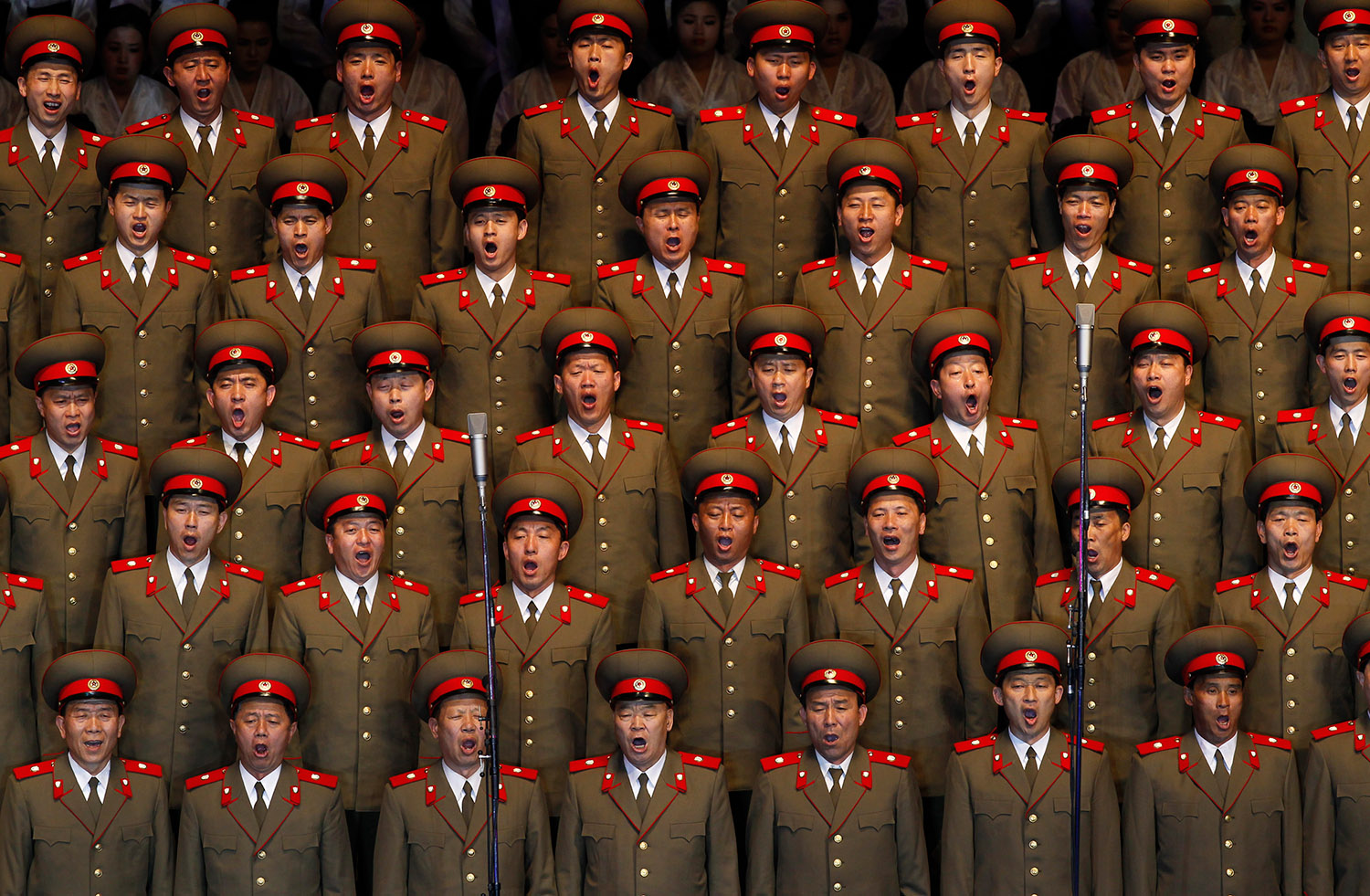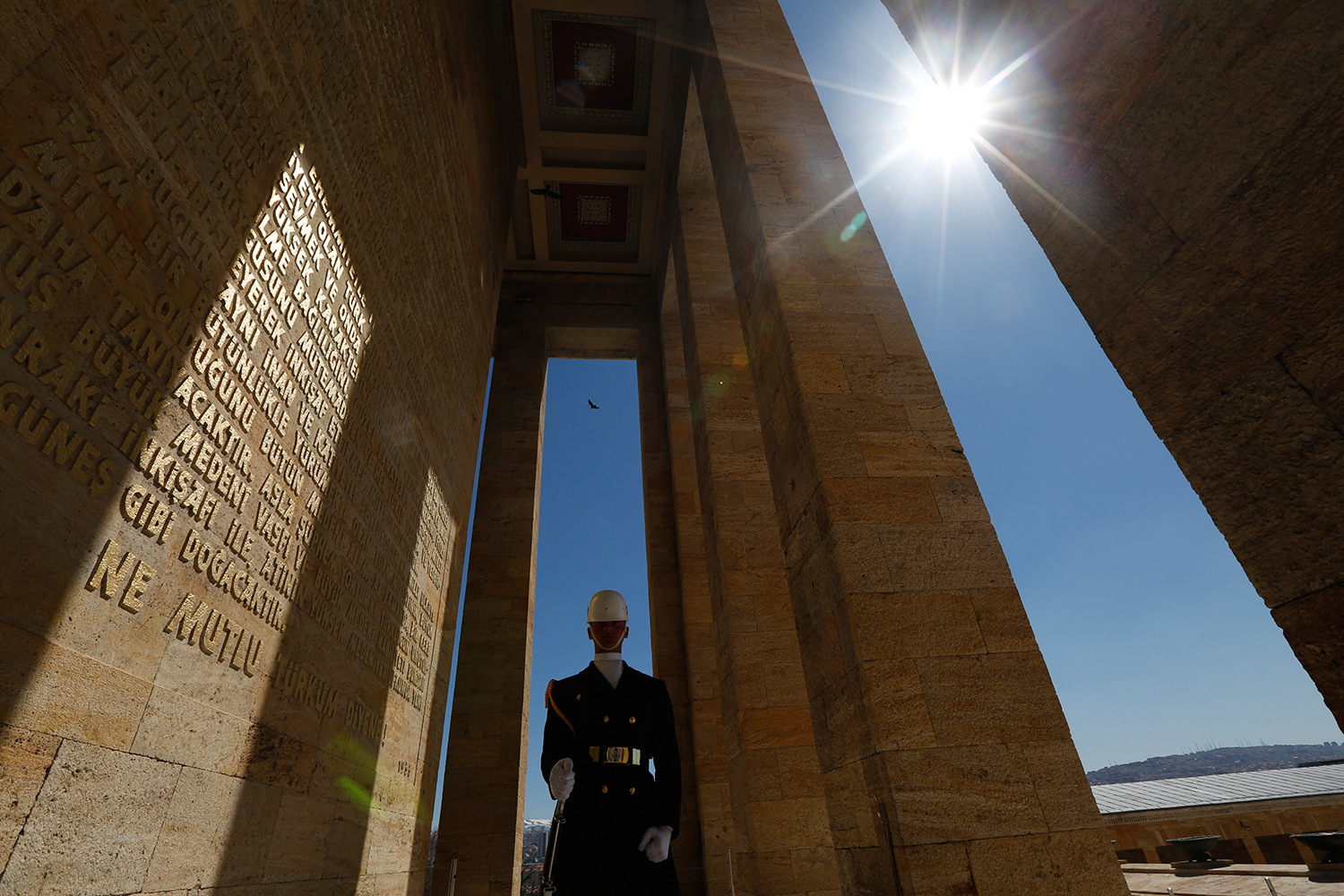50 years later, Black Panthers look back at party's founding

The Black Panthers emerged from this gritty Northern California city 50 years ago, declaring to a nation in turmoil a new party dedicated to defending African-Americans against police brutality and protecting the right of a downtrodden people to determine their own future.
In the group's short life, it launched an ambitious breakfast program for children and opened free health clinics to screen for sickle-cell anemia. At the same time, party members scared mainstream America with their calls for revolution that were at odds with Martin Luther King Jr.'s insistence on peaceful protest.
In this Aug. 13, 1971 photo, Bobby Seale, chairman of the Black Panther Party, addresses a rally outside the party headquarters in Oakland, Calif., urging members to boycott certain liquor stores. Hundreds of former Black Panthers from around the world are expected to gather in Oakland, California, for a four-day conference that started Thursday, Oct. 20, 2016. The Panthers emerged from the gritty city 50 years ago, declaring a new party dedicated to defending African-Americans against police brutality and protecting their rights. (AP Photo)
The Panthers eventually imploded, weakened by internal fighting and by a government effort to undermine the group. FBI Director J. Edgar Hoover said the party represented the nation's "greatest threat to internal security." The Nixon administration moved to shut it down.
The anniversary comes as new tensions between black communities and law enforcement have given rise to another social-justice movement with Oakland ties — Black Lives Matter.
Hundreds of Panthers from around the world are expected in Oakland for a four-day conference that started Thursday. Two days later, co-founder Bobby Seale will celebrate his 80th birthday with a roast sponsored by the National Alumni Association of the Black Panther Party.
In this photo taken Saturday, Oct. 8, 2016, former members of the Black Panther Party laugh and visit outside a museum after an anniversary meeting in Oakland, Calif. In the front row is Billy X. Jennings, center, M. Gayle Asali-Dickson, second from right and Lorene Johnson, right. (AP Photo/Eric Risberg)
Nationally, African-Americans continue to lag whites in jobs, housing and health. And Oakland, once a heavily black city, is losing its African-American population as soaring home prices propelled by the technology boom drive out poorer residents.
"The only change is that time has passed," said Elaine Brown, a former party chairwoman who remains politically active in the San Francisco Bay Area. "We are the poorest. We have the least economic interests in the country, and consequently we are an oppressed people. We remain an oppressed people."
In this photo taken Saturday, Oct. 8, 2016, former Black Panther Party leader Elaine Brown answers questions outside a museum in Oakland, Calif. Hundreds of former Black Panthers from around the world are expected to gather in Oakland, Calif., for a four-day conference that started Thursday, Oct. 20, 2016. The Panthers emerged from the gritty city 50 years ago, declaring a new party dedicated to defending African-Americans against police brutality and protecting their rights. (AP Photo/Eric Risberg)
Some of about 5,000 crowd Queens-borough bridge in Manhattan on March 4, 1970 during march on the Queens house of detention, where 11 Black Panthers have been imprisoned almost a year. (AP Photo)
In this Sunday, July 10, 2016 photo, people march in a Black Lives Matter rally in Oklahoma City. (AP Photo/Sue Ogrocki)
Bobby McCall was 20 when he left Philadelphia for Oakland to help give away 10,000 sacks of free food. He agrees that conditions have not improved.
"That's why we have the movement Black Lives Matter," McCall said. "Only they're not as organized as we were. They don't have a free breakfast program like we had. They have to start developing programs."
Brad Jones, wearing cap, member of the Philadelphia Black Panthers Organization, helps serve breakfast to youngsters, March 19, 1970 in Philadelphia, Pa., headquarters. (AP Photo/Bill Ingraham)
The generally accepted date of the party's founding is Oct. 15, 1966, although Seale said it was a week later, on his birthday.
It was an era of Vietnam War and civil rights protests when Seale and Huey P. Newton drafted the party's 10-point platform. The document called for decent housing and employment. It demanded black self-reliance.
They named their group the Black Panther Party for Self-Defense after a black civil rights group in Alabama, adopted the beret worn by the French resistance to Hitler and launched armed patrols.
New Orleans policemen take cover as they move in on Black Panther headquarters in New Orleans following a shootout, Sept. 15, 1970. Shooting erupted as police moved in to make arrests. (AP Photo/Jack Thornell)
New Orleans police officers try to keep their heads down as they move in on a Black Panther headquarters during an exchange of gunfire in New Orleans on Sept. 15, 1970. (AP Photo/Jack Thornell)
Police occupy the Black Panther headquarters in New Orleans following a shootout on Tuesday, Sept. 16, 1970. Seven persons were wounded and 14 others were arrested during the incident. (AP Photo)
Chicago police remove the body of Fred Hampton, leader of the Illinois Black Panther Party, who was slain in a gun battle with police on Chicago's west side Dec. 4, 1969. Shooting erupted as police arrived at the building next to the Black Panther offices to serve a warrant. Another man identified as Mark Clark of Peoria, Ill., was killed and seven others wounded. (AP Photo)
One of the rounds of shots fired by Philadelphia police, Aug. 31, 1970 in a raid on a Black Panther headquarters ripped through a poster which had been affixed to the wall of one of the rooms, announcing the upcoming Black Panther convention in Philadelphia over the weekend. The poster said here was “Three Good Reasons for a revolutionary people’s constructional convention” and showed “Richard, the pig-hearted Nixon” the Cisco kid, Mussolini Rizzo and “Pig (John) Harrington”, head of the Fraternal Order of Police. (AP Photo/Bill Ingraham)
In response, California lawmakers in 1967 repealed the law that allowed people to carry loaded weapons in public. The Panthers gained national attention when they carried guns into the state Capitol in protest.
White Americans were used to King's nonviolent campaign against racism, but they were not accustomed to seeing black Americans with guns.
Today, a tart-tongued Seale bristles at all the talk of free breakfasts and firearms without what he calls critical context. He formed the party, he said, to elect minorities to political seats. The "survival programs" such as food and clothing giveaways were linked to voter registration drives, he said.
In this undated photo, Black Panther national chairman Bobby Seale, left, wearing a Colt .45, and Huey Newton, right, defense minister with a bandoleer and shotgun are shown in Oakland, Calif. Hundreds of former Black Panthers from around the world are expected to gather in Oakland, Calif., for a four-day conference that started Thursday, Oct. 20, 2016. (The San Francisco Examiner via AP)
As for the violence that included shootouts with police, he said, "The power structure was violent. The Ku Klux Klan was violent. They came and they attacked us. If you shoot at me, I'm shooting back. So are you going to call this right to self-defense or are you going to call this aggressive violence? It's not aggressive violence."
The Oakland Museum of California's exhibit "All Power to the People: Black Panthers at 50" documents the party's reign from 1966 to 1982. The party's decline included Nixon administration efforts to undermine the group with informants and misinformation.
"The FBI inspired raids on Panther offices. There was a general campaign to portray them as a negative, violent organization," said Rene de Guzman, the museum's director of exhibition strategies and senior curator of art.
In this photo taken Monday, Oct. 3, 2016, senior curator Rene de Guzman looks over a bag used by the Black Panther Party to give away food in the exhibition called "All Power to the People: Black Panthers at 50" at the Oakland Museum of California in Oakland, Calif. (AP Photo/Eric Risberg)
In this photo taken Monday, Oct. 3, 2016, a silkscreen on fabric flag urging the release of Huey Newton and a patterned dress are displayed in the exhibition called "All Power to the People: Black Panthers at 50" at the Oakland Museum of California in Oakland, Calif. (AP Photo/Eric Risberg)
Members, including Seale and Newton, cycled in and out of jails and prisons. Seale left the party in 1974. Newton dissolved it in 1982, shutting down the community school and newspaper. He was later shot dead by an alleged drug dealer.
Many see the party's influence in the youth movements of today, especially Black Lives Matter, which also protests police brutality. It started as a hashtag and love letter to blacks posted on Facebook by a young Oakland activist named Alicia Garza in 2013, after George Zimmerman was acquitted of fatally shooting 17-year-old Trayvon Martin in Florida.
Standing in the visiting cell of the San Francisco City Prison, Bobby Seale, Black Panther leader, puffs on a cigarette during an informal news conference on Monday, Nov. 11, 1969 in San Francisco. Seale was returned to San Francisco from Chicago where he was sentenced to four years in jail on contempt of court charges. Seale was one of eight defendants charged with conspiracy in connection with the 1968 Democratic Convention riots in Chicago. Standing beside Seale is his attorney Charles Garry who could not represent him in Chicago because he had undergone surgery. (AP Photo)
In this photo Friday, Sept. 30, 2016 photo, Bobby Seale, who co-founded the Black Panther Party, stands outside the Eastside Arts Alliance and Cultural Center in Oakland, Calif. Hundreds of former Black Panthers from around the world are expected to gather in Oakland, Calif., for a four-day conference that started Thursday, Oct. 20, 2016. (AP Photo/Eric Risberg)
Seale would like to see Black Lives Matter organize people to seek political office and create an environmental jobs program for youth.
Robbie Clark, a 35-year-old housing organizer and Black Lives Matter activist who grew up in Oakland, said the movement already does just that. The founders, for example, work on behalf of domestic workers and immigrants.
Some activists, Clark said, want to focus on elections and others want to go outside the political system. Many insist the movement needs both.
"We can shift some of those conditions by having the right people in office," Clark said, "but it's with the understanding that having different people in those seats doesn't make the system change overnight."
The co-founder of the Black Panthers, Bobby Seale, looks back at the founding of the group 50 years ago and its relevance today. The anniversary comes as new tensions have given rise to another social-justice movement, Black Lives Matter.
Text from the AP news story, 50 years later, Black Panthers look back at party's founding, by Janie Har.
See these photos on APImages
Follow AP photographers on Twitter
Written content on this site is not created by the editorial department of AP, unless otherwise noted.
Visual artist and Journalist







